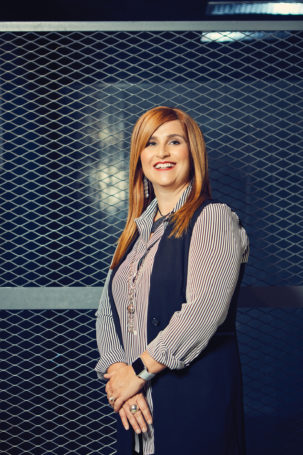March 10, 2021
Creative minds are given a boost to continue creating
There are silver linings, lessons learned and perhaps even new ways of doing things that will help the community recover more quickly, but there is no way to sugar-coat or sidestep the basic fact: The effects of the COVID-19 pandemic have been devastating for Edmonton’s arts community.
The uncharacteristic quietude of festivals and venues speaks for itself, but the below-the-public-eyeline effects are no less dire: audiences and revenues down by as much as three-quarters; jobs both in the arts and adjacent to the sector evaporating; professionals, amateurs and aspiring artists alike left with almost nowhere to perform, practise and learn on a consistent basis.
“It’s been crushing, both from a creative standpoint and a mental-health standpoint, a joy standpoint,” Chantell Ghosh, executive director of the Citadel Theatre, says. “From the moment we had to cancel shows, I think, we all kind of realized that we were starting a journey through the steps of grief, and I guess the good news is that we were able to reach a point of acceptance.”

Precisely what that form of acceptance looks like has varied widely, from organizations hunkering down and hoping to weather the storm, to artists setting up stages anywhere they could find enough eyeballs to safely watch them, whether that was on a porch or online.
“The artistic community is extraordinarily creative and resilient at finding ways to share their expressions,” says Stephen Williams, director of grants, awards and support programs at the Edmonton Arts Council (EAC). As the body that distributes the city’s arts grants, the EAC saw demand for individual artists’ funding triple in 2020 — and though that’s partially a result of most other avenues for artists to make money disappearing, it also speaks to the fundamental need Edmonton’s artists have to keep creating.
“We pivoted pretty hard this year to supporting individual practitioners, but we didn’t set up any kind of income support: We support artists so they can pursue their practice,” explains Williams. “And this past year will have yielded the greatest number of artists we’ve ever funded. They might not have always had a chance to show it this year, but artists were still making work.”
That kind of resiliency was evident at an institutional level as well. The first thing the Citadel did after it got to its acceptance stage, says Ghosh, was find a way to get performers performing with its Stuck in the House series, made possible in part by funds from Edmonton Community Foundation (ECF).
“Our plan was to have one a day until the pandemic ended, although that was before we realized how long it might go on — but we got to 80 shows, which was a lifeline for our performers and our audience,” Ghosh explains, adding that the experience also encouraged them to create a filmed version of the Citadel’s renowned holiday staple, A Christmas Carol.
Other organizations found ways to share work that might prove to be more permanent. Latitude 53, the Mitchell Art Gallery, Ociciwan Contemporary Art Collective and SNAP Gallery pooled resources from ECF’s Digital Arts Funds and EAC grants to create Art From Here, showcasing, paying and helping lead a discussion about a different local artist each week. It has been a chance to not just maintain some of the ties so essential to an artistic community, says Latitude 53 executive director Michelle Schultz, but to help grow that community.
“While the online programming certainly wasn’t a replacement for the experience of visiting the gallery, we did immediately recognize that this form of programming allowed a much greater reach than our gallery exhibitions ordinarily do,” she explains. “It allowed this work and these conversations to reach audiences across the country and internationally.”
That kind of connectivity gives Schultz hope that things in the arts community won’t just return to normal, but come back better and stronger in an environment that promises to challenge artists even after the pandemic has subsided. It’s a bit of resilient optimism that Ghosh echoes, too, and is perhaps proof that, no matter how bad things might get, artists will do what they can to pull through — as much for their audience as themselves.
“It has been a great shift in viewpoint,” Ghosh says. “Both in terms of bringing some flexibility to an industry that often isn’t, and in terms of providing access and removing barriers that we hadn’t always considered before. “We’re going to be very happy to welcome people back,” she adds, “whichever way they want to come back.”